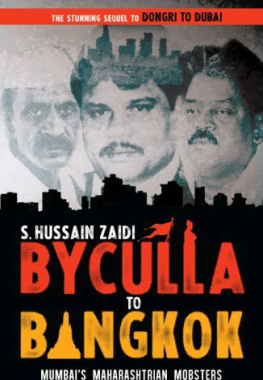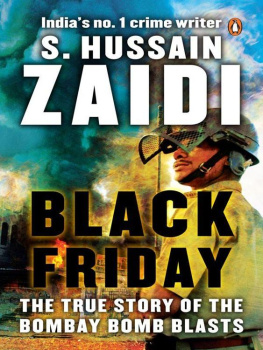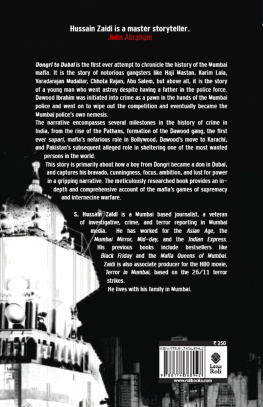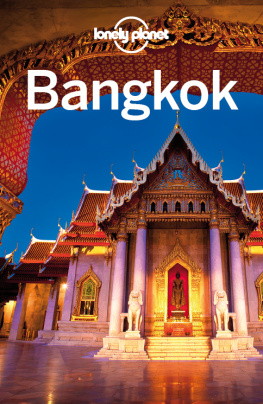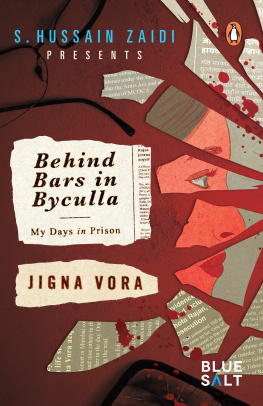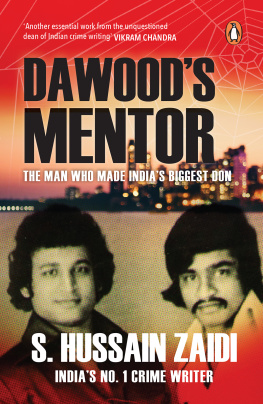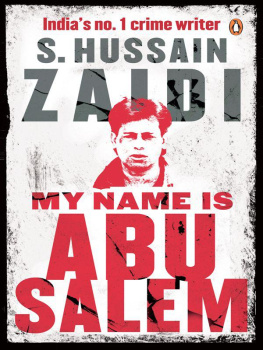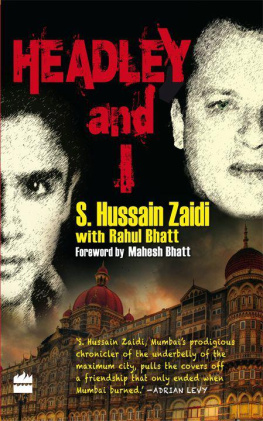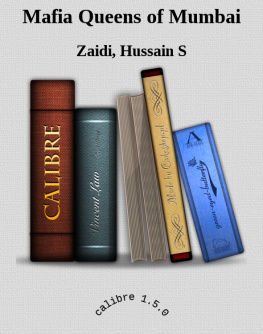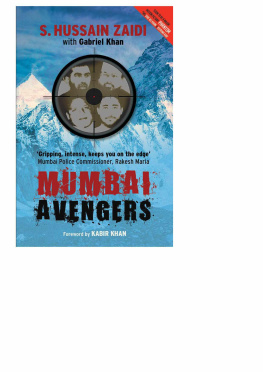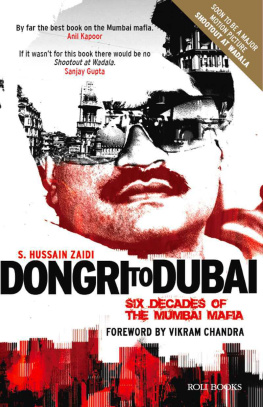Zaidi - Byculla to Bangkok
Here you can read online Zaidi - Byculla to Bangkok full text of the book (entire story) in english for free. Download pdf and epub, get meaning, cover and reviews about this ebook. City: India--Mumbai, year: 2014, genre: Detective and thriller. Description of the work, (preface) as well as reviews are available. Best literature library LitArk.com created for fans of good reading and offers a wide selection of genres:
Romance novel
Science fiction
Adventure
Detective
Science
History
Home and family
Prose
Art
Politics
Computer
Non-fiction
Religion
Business
Children
Humor
Choose a favorite category and find really read worthwhile books. Enjoy immersion in the world of imagination, feel the emotions of the characters or learn something new for yourself, make an fascinating discovery.
- Book:Byculla to Bangkok
- Author:
- Genre:
- Year:2014
- City:India--Mumbai
- Rating:3 / 5
- Favourites:Add to favourites
- Your mark:
- 60
- 1
- 2
- 3
- 4
- 5
Byculla to Bangkok: summary, description and annotation
We offer to read an annotation, description, summary or preface (depends on what the author of the book "Byculla to Bangkok" wrote himself). If you haven't found the necessary information about the book — write in the comments, we will try to find it.
Zaidi: author's other books
Who wrote Byculla to Bangkok? Find out the surname, the name of the author of the book and a list of all author's works by series.
Byculla to Bangkok — read online for free the complete book (whole text) full work
Below is the text of the book, divided by pages. System saving the place of the last page read, allows you to conveniently read the book "Byculla to Bangkok" online for free, without having to search again every time where you left off. Put a bookmark, and you can go to the page where you finished reading at any time.
Font size:
Interval:
Bookmark:

Byculla to Bangkok
S. HUSSAIN ZAIDI

HarperCollins Publishers India
For Velly
and
my sons Ammar and Zain,
the centre of my universe
Byculla to Bangkok completes my previous book, Dongri to Dubai (D2D), which chronicled the Mumbai mafia and its tryst with the city in the last six decades. D2D concentrated on Dawood Ibrahims exponential rise from a street thug to a global ganglord and the people around him who contributed to his growth, including Haji Mastan, Karim Lala, Bashu Dada, Varadarajan Mudaliar and other criminals of the era.
While writing Black Friday, my first book, I had keenly felt the absence of any literature on the Mumbai mafia. When D2D finally emerged in 2012 after seven years of gruelling and intensive research, I found that much had been left unsaid. While D2D spoke of Dawood and his predecessors, I had left out the sons-of-the-soil (if I may borrow the late Bal Thackerays favourite buzzword). The Mumbai mafia lore is incomplete without the inclusion of the local lads those from the mill heartlands who were born in Byculla, Parel, Lalbaug and got sucked into the vortex of the socio-economic quagmire that kept the poor in a circle of poverty for generations. As we remodel south-central Mumbai into a Manhattan, we have to remember that we have failed to redress the issues that once drew promising young men to a life of crime. No city can grow unless there is a concomitant growthof its denizens. The transformation of the mill lands into a swank upper-crust module has left thousands of young men from these areas in the red. The malls are no compensation, as they are filled withrestless young men who work twelve hours a day withhardly any job security or personal growth. Thus the stories of the first batch of wayward youthwho became gangsters are relevant even today and are also inextricably linked to the social history and map of the city.
Chhota Rajan, Arun Gawli, Amar Naik, Ashwin Naik, Suresh Manchekar, Sunil Sawant, D. K. Rao and so many other boys grew up at a time when money was scarce and opportunities limited. Save for a handful of survivors, all the rest were killed in police encounters. Their story runs parallel withthat of the degradation of the Mumbai police force. Until the early nineties, the Mumbai police by and large had some credibility. But withthe onset of encounters, they became pawns in the hands of politicians. Political parties that had initially patronized the mafia marked them out in a use-and-throw policy.
The only redeeming aspect of these encounters was that fewer local boys dared to step out of line.
In this book, I have not dealt withseveral events already elaborated upon in D2D, for example the J.J. Hospital shootout or Chhota Rajans assassination attempt in Bangkok. Those and other incidents have been comprehensively covered in the earlier book. It is also not possible to chronicle the entire history of Mumbais Maharashtrian mafia in a few hundred pages. However, I have chosen those stories and narratives that form the crux of their rise and decline to provide a perspective to readers who want to know more about the mafia landscape of Mumbai.
Contents
6 MAY 1993
The police cruiser was racing along at breakneck speed. The plainclothes men from crime branch unit VII were anxious, uncertain as they were about this operation.
They were chasing three occupants of a Neptune-blue Maruti-Suzuki 800, the car of choice for most Indians from the moment it hit the roads in 1983. The Mumbai mafia loved the little car; it was easy to manoeuvre when the police were hot on their heels.
In the back was a man called Chandrakant Talwalekar. The two men in the front seat were considered to be Mumbais most ferocious hitmen: Subhash and Ganesh Kunchikurve. Together, they were known as the Makadwala brothers. Their community is known for broom- and basket-making and training monkeys for roadside shows, hence the moniker Makadwala. The Makadwala compound in Dharavi, in south-central Mumbai, is inhabited by the Kunchikurves, a simple community considered incapable of doing what these renegades were about to do. The notorious Subhash Kunchikurve wielded not a broom but an AK-56. This at a time when Mumbai had not even heard of automatic machine guns; the Mumbai police were still struggling with their outdated self-loading rifles (SLRs) from the 1940s.
The Makadwala brothers were part of the hunter-gatherer Yerukala community, which had been forced out of the caste system after it lost the right to a livelihood; the hunting and gathering of forest produce had been banned in 1878. They were from Andhra Pradesh, Karnataka and Tamil Nadu, and in the north, they were related to the Bhils and the Kiratas. The British had declared them a criminal tribe in 1935. They were among fifteen communities branded in this manner, with the result that they had to report to the police station every time their settlements moved from one place to another. They spoke two languages one within the community, which had secret codes, and another with outsiders.
In the 1930s, the community migrated to Mumbai and several of them settled in Dharavi, in what is now called the Makadwala compound. The women of the community were said to be good at fortune-telling. But fortune-telling in Mumbai did not take off as they had expected, and they took their place at the margins again, making brooms, weaving baskets and training monkeys. The Yerukalas were such precise, expert hunters that they could easily nail a running animal or a flying bird; the Makadwala brothers skill as sharpshooters was taken for granted.
Subhash Makadwala was part of the group led by Anil Parab, who was Dawood Ibrahims trusted aide. Subhash had a record of more than twenty-five murders, most of them executed with a ruthless spray of AK-56 bullets. Mumbai was used to high-profile killings, daylight murders, executions by the mafia. But the use of the Russian-made Kalashnikov assault gun in a civilian killing chilled the blood of even the most hardened police officers.
Subhash walked around with his AK-56 just as people walk around with their umbrellas during the monsoon. He carried it with him everywhere. When he went to a beer bar, he kept the gun on the table. His close aides were terrified of both the gun and its owner: Subhash was known to open fire indiscriminately, at the slightest provocation.
The terror the Makadwala brothers evoked had spread amongst Mumbais business community. Builders, hoteliers, share brokers, film producers, distributors and even actors were threatened, tortured and exploited by them. Subhash was especially notorious. A buxom Pakistani actress who sang with a nasal twang was the hapless recipient of his attentions and the victim of his baser instincts. The gangster sexually exploited the Bollywood diva for a considerable period, and it is said that he made her sing each time before raping her. She was so terrified that she could not even muster up the courage to lodge a formal police complaint against him.
The Mumbai police were reduced to mere spectators in the face of Makadwalas terror spree. The impotence of the police and their adherence to the basic police credo of qayeda mein fayeda (the benefits of following the law) had so emboldened Subhash Makadwala that he boasted that no one but the Special Operations Squad (SOS) could touch him, let alone arrest or kill him.
And this was one such attempt. The Bandra unit of the crime branch had received information that Subhash and his men were about to exit a flat at Amrut Nagar in Ghatkopar, in the north-eastern suburbs of Mumbai and had sprung into action.
Next pageFont size:
Interval:
Bookmark:
Similar books «Byculla to Bangkok»
Look at similar books to Byculla to Bangkok. We have selected literature similar in name and meaning in the hope of providing readers with more options to find new, interesting, not yet read works.
Discussion, reviews of the book Byculla to Bangkok and just readers' own opinions. Leave your comments, write what you think about the work, its meaning or the main characters. Specify what exactly you liked and what you didn't like, and why you think so.

